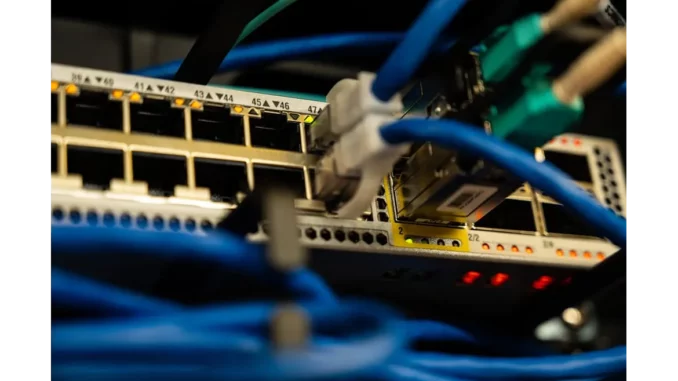
Summary
Decentralising Physical Infrastructure Networks, or DePINs, is emerging as a transformative frontier in the blockchain landscape, with significant potential to optimise and democratise infrastructure management. In a recent discussion with Rhoda Pope, industry observer Tom Trowbridge, the CEO of Fluence Labs, shared insights into how DePINs could reshape various sectors, including energy, transportation, and telecommunications. However, challenges such as scalability and regulatory compliance remain. “The potential of DePINs is to transform how we interact with and manage the physical world,” Trowbridge noted, emphasising the importance of collaboration in overcoming barriers.
Main Article
The digital revolution has long been characterised by an inexorable push towards decentralisation, with DePINs representing a bold new step in this evolution. These networks utilise decentralised technologies to manage and optimise physical infrastructure, distributing control and decision-making across numerous nodes. This contrasts starkly with traditional centralised systems, which often suffer from inefficiencies and a lack of transparency. As Tom Trowbridge articulated, “Imagine a world where infrastructure adapts and evolves based on real-time data and input from a multitude of sources, rather than being constrained by a central authority.”
Exploring Sectoral Impact
The potential applications of DePINs are vast, spanning from energy grids and transportation networks to supply chains and telecommunications. In each sector, the adoption of decentralised infrastructure could lead to more equitable and sustainable practices. For instance, in energy, DePINs could enable smarter grid management, integrating renewable sources more effectively and reducing reliance on fossil fuels. In transportation, decentralised networks might optimise traffic flows and logistics, cutting emissions and improving efficiency.
However, the journey towards widespread DePIN adoption is fraught with obstacles. Scalability remains a significant concern, with the need to ensure that these networks can handle large volumes of data and transactions. Interoperability is another critical challenge, as DePINs must integrate seamlessly with existing systems to be effective. Finally, regulatory compliance poses a formidable barrier, particularly in sectors with stringent oversight.
Building Trust and Collaboration
Perhaps the most pressing challenge is building trust in decentralised systems. In the current paradigm, central authorities provide assurance of quality and problem-solving. Transitioning to a decentralised model requires a paradigm shift in public perception. As Trowbridge noted, “One of the biggest challenges is building trust in a decentralised system.”
To address these challenges, innovation and collaboration are paramount. An open ecosystem, where developers, businesses, and policymakers collaborate to create standards and frameworks, is essential. This cooperative approach can help overcome technical and social barriers, fostering the development of robust DePIN solutions.
The societal implications of DePINs are profound. By decentralising control, these networks have the potential to empower communities, reduce inequalities, and foster a more inclusive economic landscape. Trowbridge highlighted the impact on historically underserved rural areas, suggesting that DePINs could enable these communities to participate actively in the development and maintenance of their infrastructure.
A Future Informed by Decentralisation
Looking to the future, the momentum behind decentralised infrastructure is undeniable. Although still in the nascent stages, more stakeholders are recognising the value of DePIN-based solutions. This growing recognition suggests a gradual but steady shift towards decentralisation in managing physical infrastructure.
Detailed Analysis
The potential of DePINs lies in their ability to disrupt traditional infrastructure systems, which are often plagued by inefficiencies and a lack of transparency. By leveraging decentralised technologies, DePINs promise a more resilient and adaptable infrastructure landscape. This shift aligns with broader economic trends towards decentralisation, as seen in sectors such as finance, where blockchain technology is already making significant inroads.
Moreover, by enabling infrastructure to evolve based on real-time data and a diverse array of inputs, DePINs could drive innovation and efficiency across industries. This adaptability is crucial in an era characterised by rapid technological change and increasing demands for sustainability.
However, the transition to DePINs is not without its hurdles. The scalability of decentralised networks remains a significant technical challenge, while regulatory compliance poses a barrier to widespread adoption. Overcoming these challenges will require concerted efforts from all stakeholders involved.
Further Developments
As the concept of DePINs continues to gain traction, further developments are anticipated in this burgeoning field. Industry observers expect ongoing advancements in technology to address scalability and interoperability challenges. Additionally, regulatory frameworks are likely to evolve, potentially paving the way for broader adoption of decentralised infrastructure networks.
The collaborative efforts of developers, businesses, and policymakers will play a pivotal role in shaping the future of DePINs. As these stakeholders work together to create standards and frameworks, the potential for DePINs to transform how we manage and interact with physical infrastructure becomes increasingly tangible.
Readers are encouraged to stay engaged with this unfolding narrative, as the journey towards decentralised infrastructure promises to redefine the way we connect with and harness the physical world around us. As new developments emerge, they will undoubtedly offer fresh insights into the capabilities and implications of DePINs, further illuminating this exciting frontier in the digital revolution.

